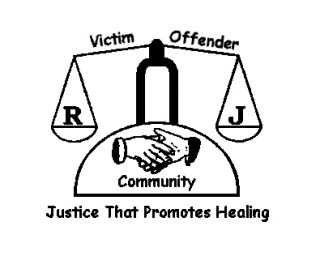
Motivation
Restorative Justice or Punitive Justice?
Here is encouraging news for helping prisoners, victims of crimes, and kids.
Posted August 5, 2014

Being in a supportive group, where others are speaking from the heart, can inspire honesty and empathy. Back in the 60s, a married man I knew was having an affair. Someone in his encounter group confessed that he had been having an affair, too, but was ending it because he felt badly for the heartache he was causing his family. This helped the man I knew get in touch with his feelings about his own family and marriage. He admitted to the group that he was also having an affair and he decided to end it.
Restorative justice groups are distant cousins of encounter groups. They are used in schools, prisons, and elsewhere.
In my recent blog, “Restorative Justice: Help is on the Way for Our Kids” (Part I and Part II), I quoted Fania Davis: “Punitive justice asks only what rule or law was broken, who did it, and how they should be punished. It responds to the original harm with more harm. Restorative justice asks who was harmed and what are the needs and obligations of all affected.”
Restorative justice groups have helped many kids, teachers, and parents in schools in Berkeley, Oakland, and elsewhere. They are also helping offenders and victims in prisons, including Norfolk, one of the biggest prisons in Massachusetts with 1,500 inmates. These groups use the dialogue circle based on American Indian practices. The program in Norfolk is modeled on a 34-week program, called the Victim Offender Education Group, developed for California’s San Quentin State Prison.
In a recent New York Times article, “By Talking, Inmates and Victims Make Things ‘More Right,’” Dina Kraft writes: “Restorative justice brings offenders and victims together voluntarily. Offenders take responsibility and acknowledge the impact their actions had on their victims and loved ones as well as their own families and neighborhoods. The victim is given a chance to ask questions of the offenders and share how their lives were affected by the crime. Advocates say it is key to rehabilitation and reduced recidivism.”
Janet Connors, a longtime community activist, was the first in Massachusetts to participate in a mediated dialogue with two of the young men responsible for her son Joel’s stabbing death. At a meeting later, Kraft writes, “Speaking in a loud, firm voice, she looked out at her audience and told the prisoners that calling them monsters was a disservice to everyone. ‘Holding you in your humanity,’ she said. 'It’s how we hold each other accountable.’”
Whenever possible, restorative justice is the choice if the goals are to heal, to change, to improve, to communicate. Punitive justice doesn't contribute to most of these goals.
Connors continued, “’We’re willing to risk a lot to open up the lines of communication. To really figure out what to do to stop the nonsense—nonsense is too weak a word. To stop this horror that is taking people’s lives.’”
Visit wagele.com to check out my books (including The Enneagram of Death and The Enneagram of Parenting), CD, cartoons, essays, music, and Famous Enneagram Types.

